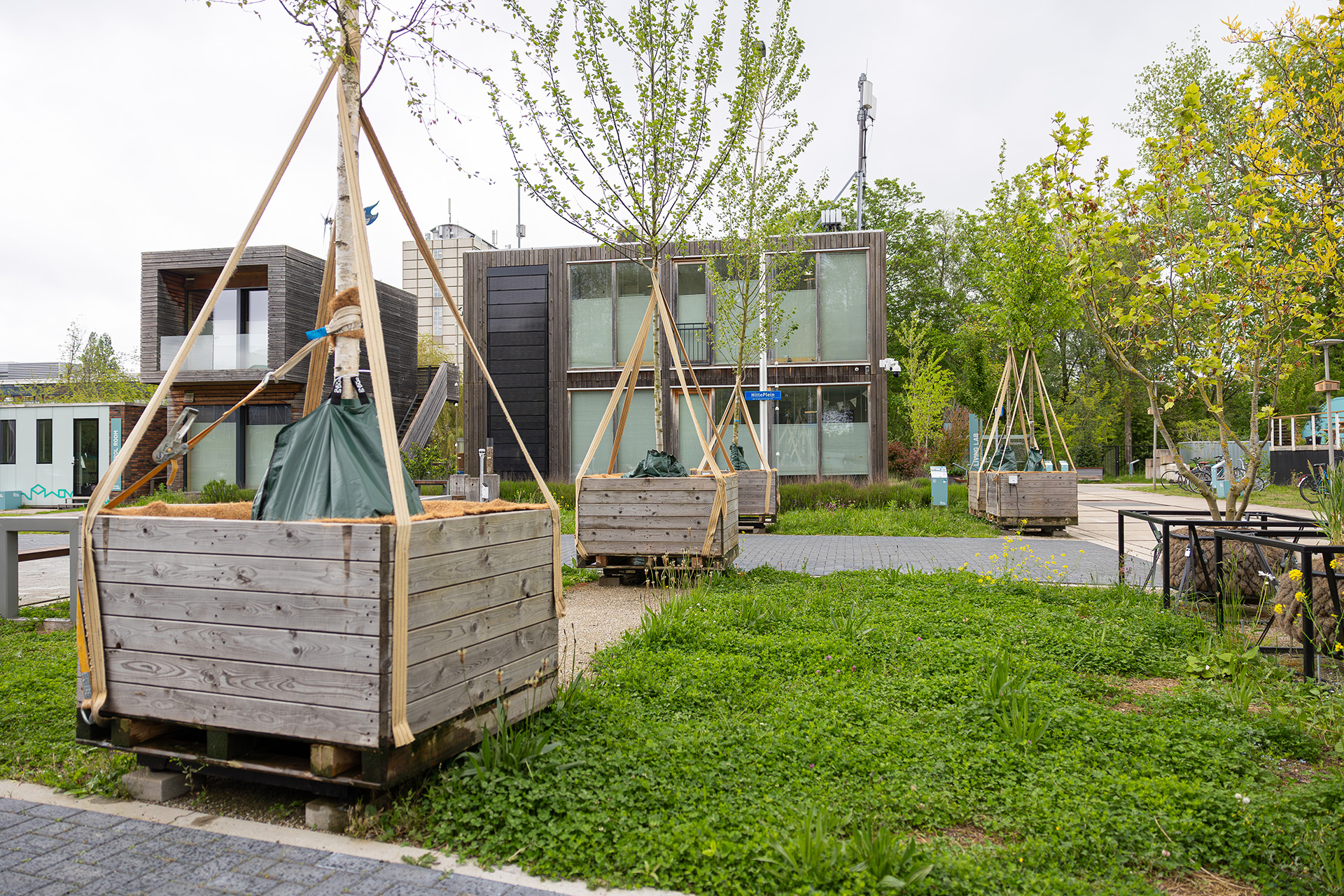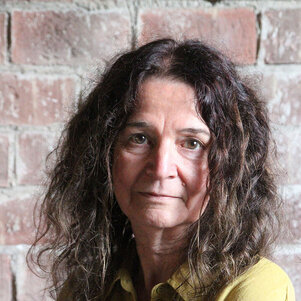At The Green Village's Heat Square, summer measurements of the tree transpiration study are now nearing their end. As long as temperatures remain above 20 degrees, the transpiration of the five trees will be monitored. The studies at the Heat Square address, among others, two key questions: 1) What is the maximum amount of water a tree can evaporate? And 2) What is the impact of this evaporation on heat stress in urban areas?
The original version of this article (Dutch only) can be found on the website of The Green Village.
The PhD research of Eva Stache (TU Delft, Faculty of Civil Engineering and Geosciences) aims to map how tree transpiration can contribute to cooling, and thus reducing the Urban Heat Island Effect. In addition, Lea Hartmeyer and René van der Velde (TU Delft, Faculty of Architecture and the Built Environment) work on the i-Tree 2.0-NL project. They are investigating, among other things, which conditions influence tree transpiration and how this data can be incorporated into software and transition strategies.

These studies are crucial to understanding the ideal conditions for tree transpiration, and consequently the cooling that trees can provide in urban environments. Trees play a vital role in cooling down cities, which are heating up due to climate change and the accompanying Urban Heat Island effect. Researcher Lea Hartmeyer explains: “Trees act as natural air conditioners in the city. We know that trees can cool the city, but not exactly how much, nor do we know what the differences are between different tree species.”
Trees act as natural air conditioners: they can cool the city.
Lea Hartmeyer
The Heat Square as an open-air laboratory
Several tree species are examined on the Heat Square during this measurement campaign. These include birch, lime and plantain: the most common urban trees in the Netherlands. The trees are placed in trays on scales to accurately measure how much water they evaporate through their leaves. The trays are covered with a coconut fibre cloth, which minimises evaporation of water from the soil. Sensors have been placed on the trees and leaves to measure leaf temperature and atmospheric humidity. This allows the researchers to see how much water the trees transpire during the day and how this differs from the night.
Lea, together with Civil Engineering students, is hard at work with a LiDAR scanner. This device creates a so-called point cloud of the tree, which allows them to determine the leaf surface area. She elaborates: “It is exciting to really see that the tree lives and sleeps. During the day, trees transpire a lot of water, while at night they pretty much stop. Today we are investigating whether there is a link between the amount of leaf area and the amount of evaporation. The research is supported by students helping with measurement and calculations.”
It is exciting to really see that the tree lives and sleeps. Lots of transpiration by day, then almost none at night.
Lea Hartmeyer

During the measurement campaign, the trees are watered once and the initial weight is recorded. Thereafter, the decrease in weight equals the amount of water evaporated from the tree's leaves. The trick is to find correlations with air temperature, humidity, leaf temperature, and time of day. Lea says: “The Heat Square at The Green Village is a perfect place for this research, especially because of all the data infrastructure full of sensors that was already here.”
Implications of this research
The research will provide a data-supported estimate of how much water trees can evaporate in a day. For an example, initial results have already shown that a young plantain can evaporate as much as 60 litres of water in a day. This information is important for several reasons. First, tree evaporation naturally provides cooling. In addition, part of this research is extrapolating the data to mature trees already in the ground. If we know how much water a certain type of tree evaporates, and thus how much it contributes to cooling, municipalities and landscape managers can make informed choices about which trees to plant in certain areas.
PhD student Eva Stache: “We want to continue researching trees at The Green Village over the next five years. It would be great if we could borrow every new tree planted on the TU Delft Campus and first examine it at The Green Village. That way, we will build a nice tree database for further research.”
It would be great to study every new tree for the TU Delft Campus at The Green Village.
Eva Stache
Published: September 2024
More information
- The images in this article are owned by The Green Village.
- Do you want to do research at the Heat Square? Feel free to get in touch!
- Read our previous article on the construction and purpose of the Heat Square: How do you make open, paved urban space climate-proof?

Eva Stache

